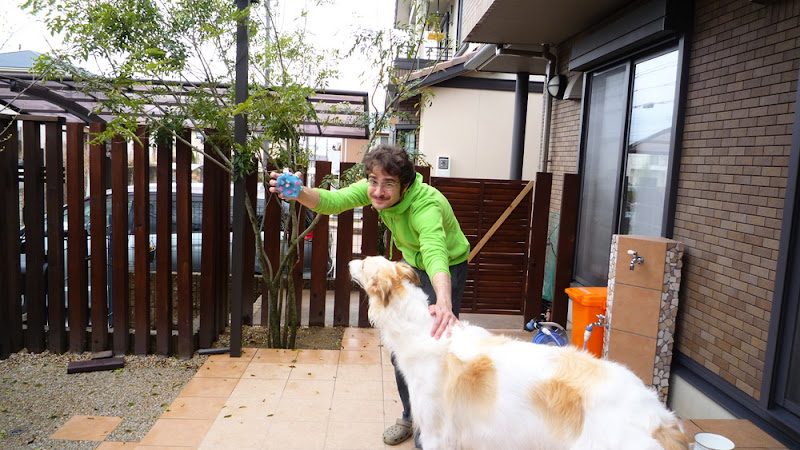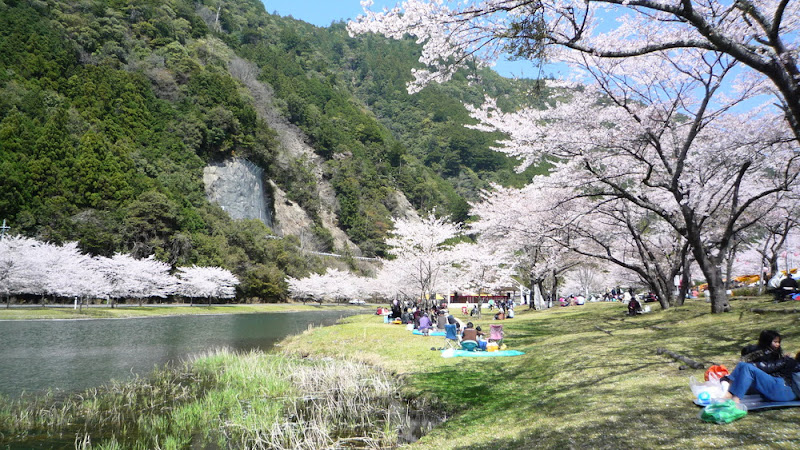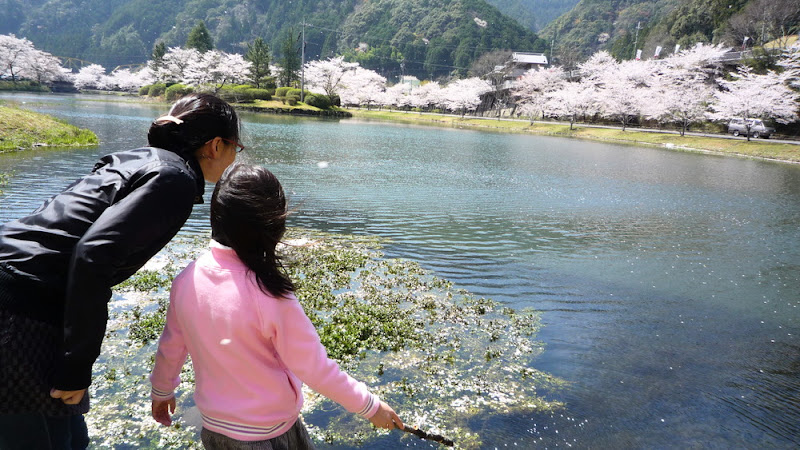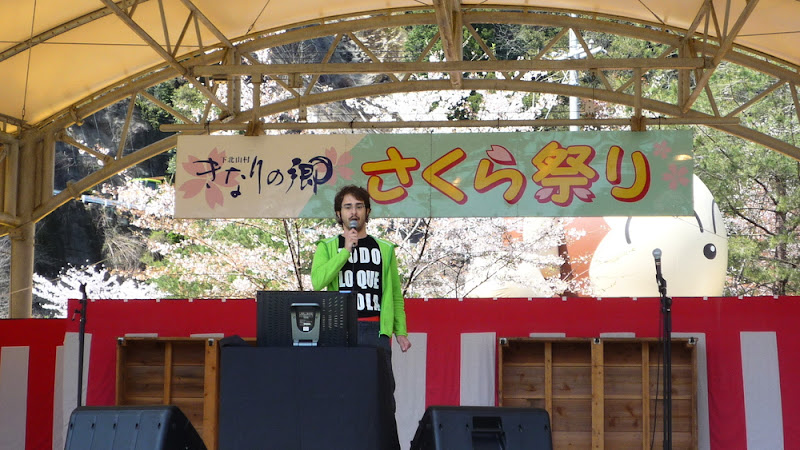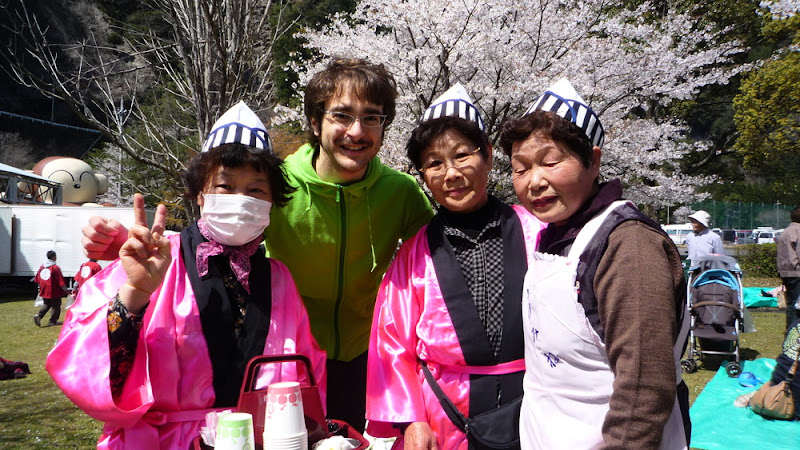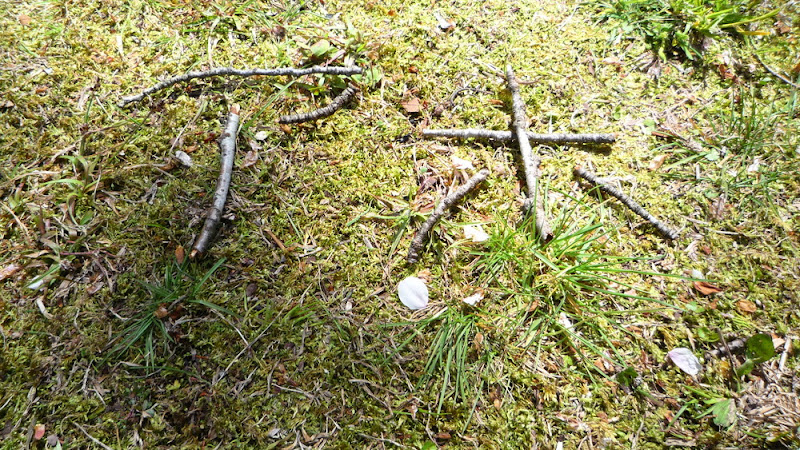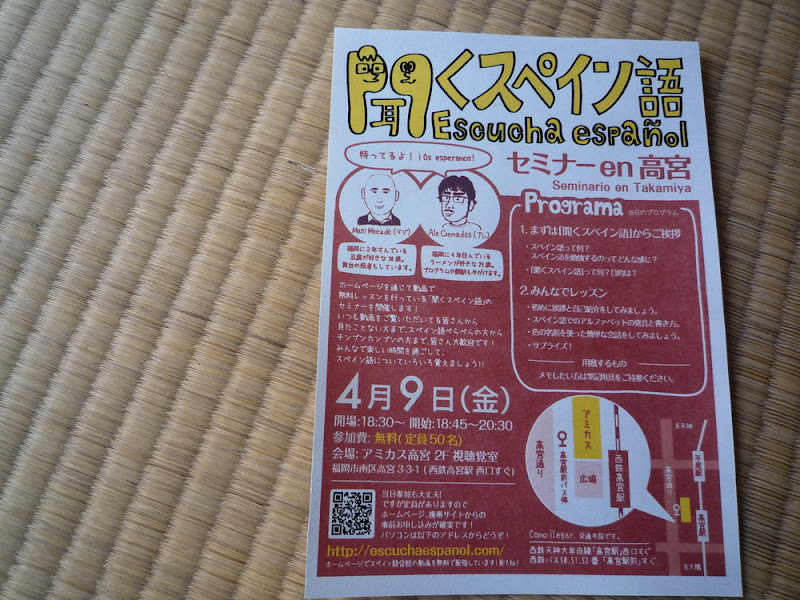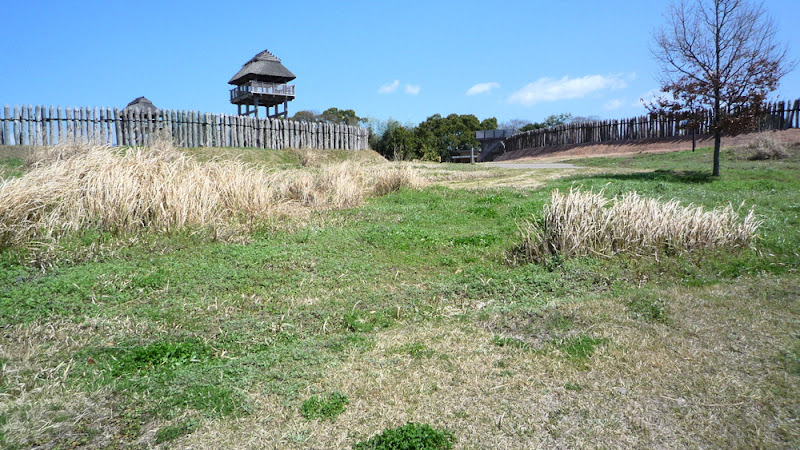
¿Os suena este paisaje? A mí me suena a La Princesa Mononoke. Se parece un poco al poblado que sale, aunque en realidad representa otro tiempo, otra región y otra gente.
これを見てもののけ姫に出てくる集落を思い出したけど、調べたら違う時代、違う場所、違う人間の話だった。でもちょっと似てるな!
Does this look familiar? I found it similar to the settlement we get to see in Princess Mononoke. But actually it pictures a different time, place and people.
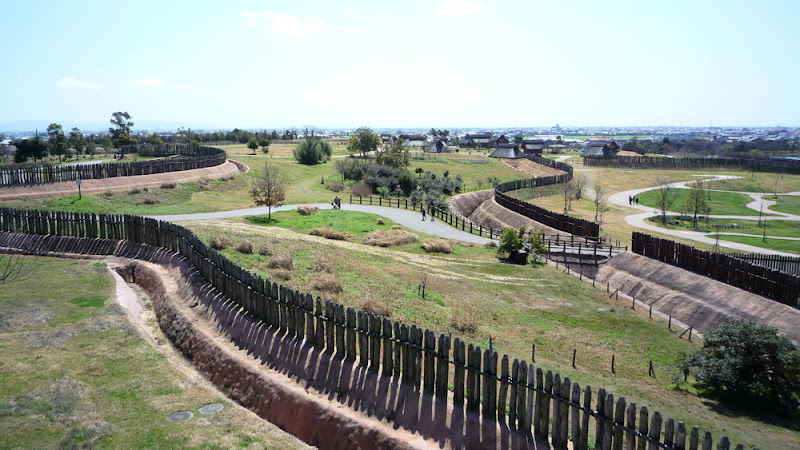
Nos encontramos en las ruinas de Yoshinogari (mapa), un lugar donde en 1986 empezaron a encontrar una importante cantidad de material de la era Yayoi (Edad del Bronce de Japón, siglos IV a.C. a III d.C. aproximadamente). Lo que vemos es una reproducción de como se supone que era un poblado de la época.
現在地は吉野ケ里遺跡 (地図)、1986年(昭和61年)から発掘されてる弥生時代の遺跡。見えてるのは復元された当時の集落だ。
We’re at the Yoshinogari site (map), where archeologists started digging in 1986 stuff from the Yayoi age (Japan’s Bronze Age, around 500 BC to 300 AD). What you see is a reproduction of a typical settlement.
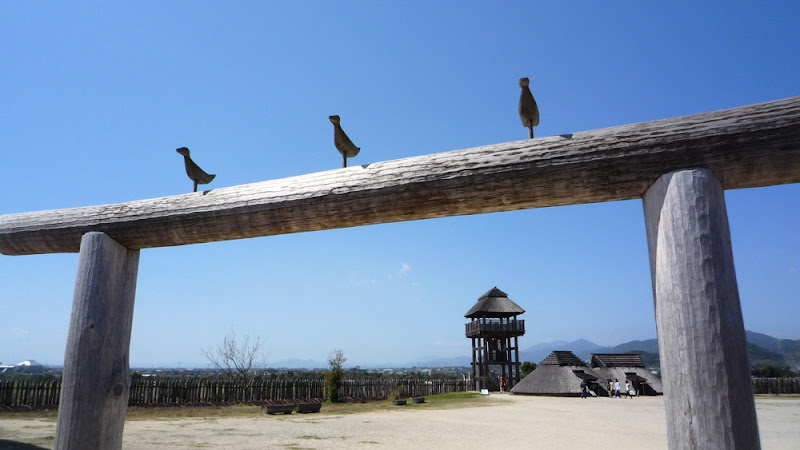
Una especie de torī primitivo con pájaros de madera nos da la bienvenida. «Torī» se escribe con los kanji de «hay pájaros» pero esos kanji se decidieron siglos después así que no sé si estos son los antepasados de los torī o no.
当初の鳥居みたいな物に招かれてお邪魔しました。鳥居って「鳥が居る」と書くけど、その漢字は何百年後に決められたのかな。これと鳥居は関係あるかどうか、分からない。
A kind of primitive torī with birds on it. Torī is written with kanji that mean «birds are there», but it would take centuries for those kanji to be decided so I don’t know if this is related to torī.
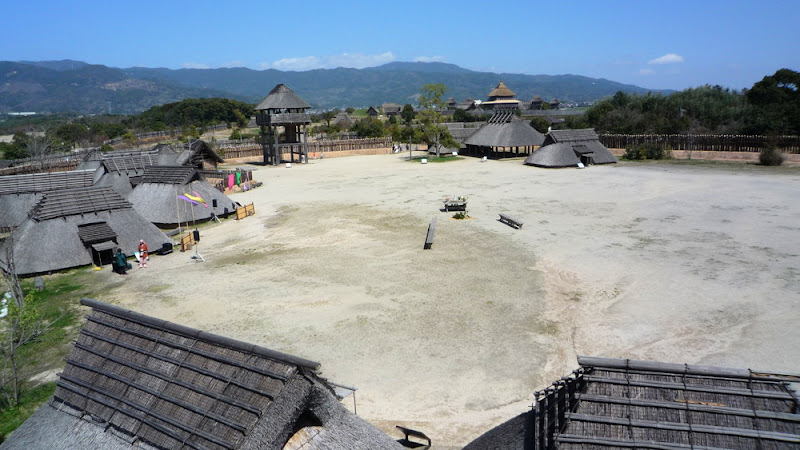
En realidad esto es una especie de urbanización para jefes, porque la gente normal vivía fuera de las vallas.
ここは本当は大人(たいじん)のためにある内閣であり、庶民は柵の外に住んでたらしい。
This is actually a guarded place for the noble. Regular people were living out the fence.

La mayoría de las viviendas son una fosa con un tejado a ras de suelo.
ほとんどの家は竪穴式住宅だった。
Most people live in pit-houses, which are just a pit and a roof on the floor.

Y sus hombres tenían el pelo recogido sobre las orejas de esta manera tan cómica a la vez que majestuosa.
そして男は耳の上にちょんまげみたいなのをしていたらしい。
Men had this majestic while funny hairstyle.
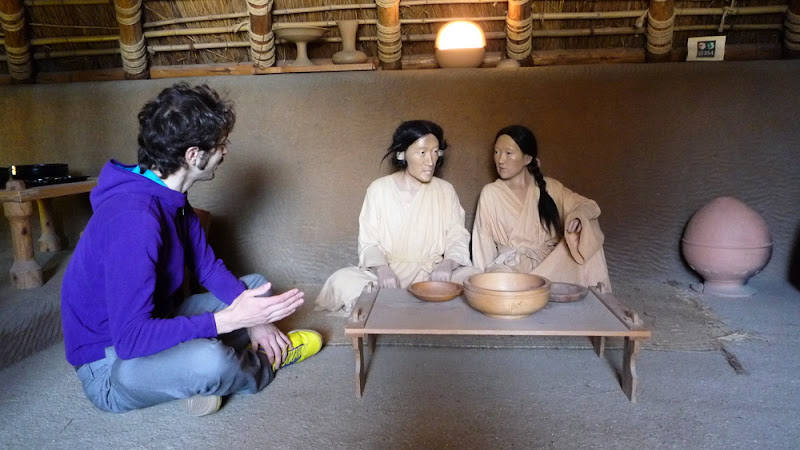
Hablando con los líderes de la aldea. Aunque parece que el cabecilla no tiene mucho interés en lo que le explico sobre el estándar MSX.
この集落の王との話し合い。王だけは僕のMSX標準についての説明に興味がないようだ。
Talking to the dwelling chief and company. It’s a pity that he doesn’t seem to be interested in the MSX standard.
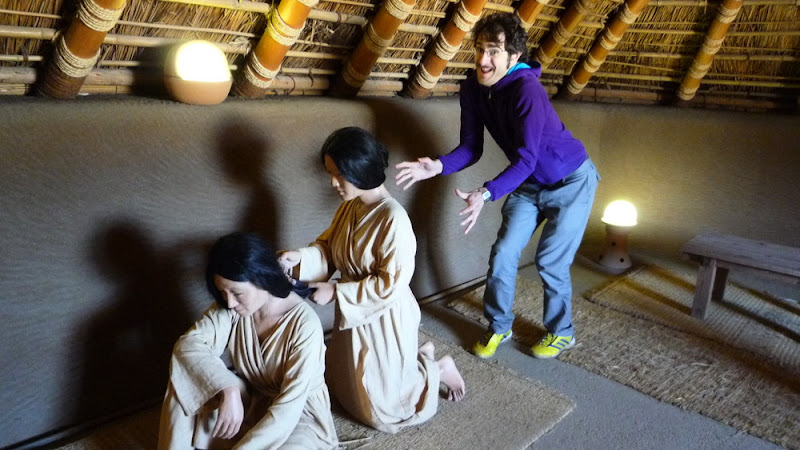
La mujer del jefe tiene su propia casa, donde su hija la peina mientras espera a los hombres lascivos del futuro. ¡Más sobre Yoshinogari en breve! Me gustó mucho porque es lo que estoy estudiando en la universidad (Asia Oriental, UOC). Sí, he vuelto a la universidad. Y sigo trabajando.
王の奥様は自分の家を持って、そこ奥様の髪をとく娘がいる。未来からの痴漢に気がつかずにね。吉野ヶ里の話はまだいっぱいあるよ!大学で学んでいるところだから面白かった。はい、久しぶりに入学しました。仕事もしてます。
The chief’s wife has her own house, where her daughter combs her hair while waiting for prevs coming from the future. More Yoshinogari stuff soon! I enjoyed it a lot because I’m studying this in University now. Yes I’m back at school. And working too.


